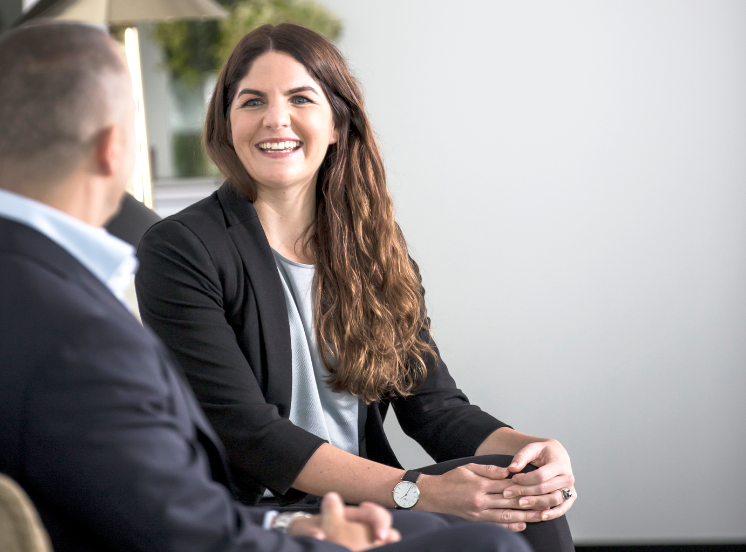What are your fees for financial advice?
We are a fee-based practice and do not accept commissions of any kind. Our fees are based on a scale of funds under management. Your initial consultations are free of charge, once we proceed to preparing a Statement of Advice (SOA) a minimum SOA fee of $3000 will apply. For a detailed breakdown of our fee schedule you can read through our Financial Services Guide.
How much do you need to retire?
How much you need to retire really depends on what retirement means to you. Some people envisage retirement as a time where they wind down their work hours, but still have income coming in from part time work. Others see themselves spending time with extended family, travelling, or doing things they have not had time to do while working. Whatever your retirement goals, understanding how much it costs you is the first step. One way to do this is to quantify how much your current lifestyle costs you, as presumably you would like to maintain that lifestyle throughout retirement. Once you have determined the income you need to meet your desired lifestyle, then you need to check if it is possible for your assets to achieve your goal. If the answer is wildly different from the amount you currently spend to live, then you might need to consider strategies to increase your savings for retirement. This is when advice can be of value. The current Association of Superannuation Funds of Australia (ASFA) have developed a Retirement Standard that shows for a comfortable retirement, singles would require a minimum income of $45,962 per annum and couples $64,771 per annum. For a modest retirement, singles would require a minimum of $29,962 and a couple would need $41,929 per annum. Both budgets assume that retirees own their home outright and are relatively healthy. As an example, if you had 25 years in retirement and need $40,000 per annum, you need $1 million dollars in your retirement. If you want $65,000 per annum, you need $1.625 million. The key here is not to compare, but to use the retirement standard to ensure you have checked off everything when you are estimating your cost of living. For example, the comfortable standard allows for one international flight every seven years. If you are planning on globe-trotting following retirement, then you might need to up your annual needs to cover travel. The definition of retirement has changed over the years as have life expectancies. A person retiring at 60 today might need to budget for their assets to last well into their 90’s…potentially longer than their working life. This means you need to not only plan for your needs in early retirement, but also consider the future costs of care should it be required. Perhaps another way to consider retirement is that you are retired when you are in a financial position to work because you want to, not because you must.
Should I invest in shares or property?
Property and shares are both great asset classes, that , if invested in the right way, and held for a period of at least 5 to 7 years, should assist with the accumulation of your wealth over time. In our view, both shares and property should form part of a well diversified investment portfolio. Spreading your investment portfolio across different asset classes reduces risk and ensures that returns are generated from multiple sources, which can smooth returns over time.
How much Superannuation do you need to establish a SMSF?
Like many areas of financial advice, the amount needed in super to justify using an SMSF to hold and invest your retirement savings depends largely on your circumstances. If you are a young accumulator that will have a rapidly growing balance and you have wealth both inside and outside of super, then it could be highly valuable to take control of the investment strategy with a balance as low as a few hundred thousand dollars. However, if you are planning for retirement and will no longer be contributing to super then you would likely need a higher balance to justify the administration costs. SMSFs can be a highly valuable investment vehicle in the right circumstances, and to determine how it could benefit your wealth journey it is best to seek quality independent advice.
How do I know if I need financial advice?
In a perfect world, everyone has the time and desire to take control and manage their financial future but in reality we could be short of 1 of these 2 things. If you are someone who needs assistance understanding their financial goals and needs guidance to help achieve them, appointing a financial adviser could help you achieve financial freedom. The role of a financial adviser is to meet with you, assess your current financial position, understand your objectives and develop and implement a comprehensive plan. Think of an adviser as your financial coach who helps motivate you to achieve all that you and your family set out to do. There are many events in life that could prompt financial advice from nearing retirement, inheriting assets from a loved one or you simply want a professional to take the burden from you.
How much personal insurance do I need?
There is no hard and fast rule/number when it comes to the right amount of personal insurance. Everyone’s circumstances are different – it’s important to identify what the financial impact of a specific event would be to you and/or your family. What are the financial consequences of a death? A disability? A serious illness? What money would you need available to continue living how you had been, or to achieve the various financial goals you have? What stage of life are you in and what level of financial strength have you already built? They are all important factors and it is vital that you speak to somebody who can guide you around what is an appropriate amount, for the various types of insurance available.
What is borrowing to invest?
A geared investment strategy involves borrowing funds from a lender and investing this borrowed capital into growth assets, such as property or shares. The idea being to increase the amount of capital invested, and with positive returns, this would magnify your investment gains. However, it’s very important to note that investment losses are also magnified. Provided investment returns are positive, a geared investment strategy can have several benefits. By increasing the amount of funds to invest, growth can be magnified. Borrowing to invest can allow you to invest sooner than it would otherwise take to save capital. It allows you to use the banks money to generate wealth and can provide a tax benefit with negative gearing, where the interest expenses are greater than the investment income. And, importantly, borrowing to invest can provide an opportunity to purchase an asset or diversify into other assets that you otherwise may have not been able to, with only your own capital.
What are the benefits of a SMSF over a retail superannuation fund?
Firstly it's control. With a SMSF you are in complete control of your superannuation investments. You, along with the help of your Adviser, can decide what investments to hold and when. You can choose when to take action, or not. Second is flexibility. A SMSF provides flexibility to access different types of investments, like direct property or alternative investments, which are unavailable with a Retail Fund. Third, cash flow. A SMSF allows you to manage the cash flow of your superannuation investments. Due to the increased control and flexibility, you know exactly what investments you hold and can determine what income they pay and when. This can allow you to craft a cash-flow strategy to ensure your investments are providing the right amount of income to meet your goals and objectives. Lastly, non-unitised structure. When you invest in a Retail Superannuation Fund you are buying units in the respective Investment option (e.g. Balanced, Growth, Default). In retirement, when you are relying on your superannuation to meet your income needs, you access this income from your retail super fund through the sale of units on a periodic basis. If the investment market suffers a downfall, then the price of your units could fall, meaning you have to sell more units to fund the same amount of income than before. When the market eventually recovers you will be holding less units, because you were forced to sell more units during a market downturn to meet your cash-flow needs. Most importantly, transparency. A SMSF provides complete transparency over what investments you hold. You can craft an investment strategy to meet your individual goals and objectives and exclude specific types of investments if you desire. With a Retail Fund you have limited opportunity over the types of investments you hold and usually get what you are given.
Do you invest in crypto currency?
At this stage we do not hold any crypto currencies on our approved product list, or any currencies for that matter. Crypto coins are certainly a new and thought provoking innovation that challenges society’s thinking around the future of currency trading and exchange. Hewison Private Wealth is conservative by nature and many clients require cash flow from their investments, which currencies do not provide. We also prefer to invest in assets that have a track record of revenue and profit to drive shareholder return.
Income Protection insurance vs TPD Insurance
Income Protection insurance is designed to replace a portion of your income if you’re unable to work due to illness or injury. It ensures you can maintain your standard of living while you recover, without depleting your savings. Income Protection insurance typically covers up to 70% of your pre-tax income with a benefit period that can range from a few months to several years, or up to a specific age (e.g., 65). The time between when you become unable to work and when you start receiving benefit, often ranges from 14 days to several months. You can tailor the policy to your needs, choosing the benefit and waiting periods. Typical Scenarios for Use include recovering from a serious illness, such as cancer or a heart attack, injuries that temporarily prevent you from performing your job, like a broken limb or back injury and incapacity that sees you unable to work for an extended period of time. TPD insurance provides a lump-sum payment if you become permanently disabled and are unlikely to work again. This type of insurance is crucial for covering long-term care costs, debts, and necessary lifestyle adjustments. TPD Insurance is a lump-sum payout that can be used for medical expenses, debt repayment, and lifestyle modifications. Types of TPD Cover include ‘Own occupation’ (if you can’t work in your specific job) and ‘Any occupation’ (if you can’t work in any job suited to your experience and training). The disability must be permanent and total, meaning it is unlikely that you will ever return to work. Typical Scenarios for Use include suffering a debilitating accident that results in permanent loss of function and being diagnosed with a severe illness that permanently prevents you from working.




